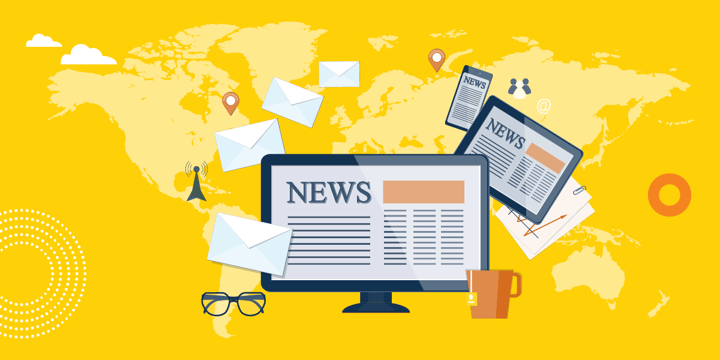This blog post is more than five years old. It may contain outdated information or refer to products that are no longer available.
As part of the Caravan Studios team at TechSoup, I have the wonderful opportunity to work on products and programs that support a wide variety of communities and causes. Over time, I've found myself having trouble keeping up with sector-specific trends and news. In this post, I hope to share a few tips that I've found useful and that might help you out too.
Part of the difficulty is that technology changes so quickly. But mostly it's because there is so much more being written and produced than ever before.

Frequently, in staying up to date about communities, industries, and organizations, we might find ourselves doing the same thing repeatedly. We open up our devices, tap and type words we think are relevant in a box, and go through a cycle of skimming, figuring out if it's important, and scrolling. And the scrolling can feel endless. We're surrounded by news feeds, social networks, and messaging apps filled with boxes of content and links by folks we know, sources we trust, but mostly strangers.
Immersed, and somewhat overwhelmed, I'm reminded of a principle I valued when I was a product manager at my previous job: Tools we create should always serve us, not the other way around.
Feeds Personalized for Us
A lot of feeds are personalized just for us. They've been deliberately designed so that the more we open, like, subscribe, or save a particular piece of content, the more that type of content surfaces to the top of the feed. Sometimes the feedback mechanism that powers these products seems subtle.
As part of my own daily morning routine, I read through the Google Discover feed on my phone that collects a mix of news related to both my personal and my professional interests. But to help make it more relevant, I actively use the switches and buttons to keep up with nonprofit news. If you're on an iPhone or Mac, Apple News is also customizable.
Roughly once a week, I like to stay in tune with my professional network. I'm not only interested in seeing where people are working now, but I also like to keep up with what's trending around the type of work I do. So I've tailored my LinkedIn feed to see content specifically related to design and engineering. This helps me keep up with sector-specific trends.
I don't frequently tweet, but occasionally, I'll skim through my Twitter feed because I like to follow specific experts and influential leaders to get a glimpse of what's on their mind. I've left it to be topic-personalized for me, but there's also a setting that lets you see everything in your timeline sorted by the latest tweets.
Take More Control with Social Listening Dashboards and Alerts
Allowing algorithms and automation to work for us can feel liberating. But sometimes we want to be much more directly in control of the technology. My colleague Susan uses Netvibes as a listening dashboard. Additionally, she uses Hootsuite regularly, with feeds dedicated to the hashtags #chatbots4good, #blockchain4good, #nonprofits, #nptech, and #publicgoodtech to stay plugged in. Lastly, she uses Google Alerts to push content to her own inbox so that she doesn't need to perform frequent searches, saving time and effort.
The most common way I've used alerts is within Slack. I belong to a variety of communities and workspaces, and I am interested in very specific topics across these channels. So I've customized Slack to alert me when anyone mentions specific words and phrases related to those topics.
Automation and Echo Chambers
In both Susan's and my workflows, we're letting the technology empower us. There really is a sweet spot in terms of picking work-related tasks ripe for technological heavy lifting.
This might require performing a more mundane need — going through the same process over and over, particularly in a way where we don't get to exercise creativity.
Perhaps we're waiting on a task beyond our control because it requires a physical delivery or handoff. Or maybe we need to communicate a transaction or status we'd wish our phones and computers performed on our behalf, because we're already comfortable doing something similar for needs outside of work.
Not everything can, and necessarily should, be automated.
We naturally find ourselves following people and topics that match our personalities and interests. If our mission-centered work requires us to be inclusive among the people we serve, there's a real danger of being too exclusive about whom we hear from. While scrolling through feeds can be convenient, the topics under curation — whether they're handpicked by us or selected by algorithms — could easily trap us in an echo chamber.
My colleagues brought up a clever idea to escape the trap: subscribe to and follow topics that might run antithetical or be in stark contrast to those subjects. This may take us out of our comfort zone. But during what seem like increasingly polarizing times, hearing from a variety of views can benefit how we work.
Please Share Your Tips
We're always looking for better ways to help civil society gain access to useful resources. If you have other ideas on how to keep a wide and open perspective while staying connected to the rest of the world, I'd love to learn about them. Staying in the know on news and events doesn't have to be daunting. So long as we can responsibly use the tools available at our disposal, and share best practices around them, we can empower one another to help accomplish each of our organization's missions.








